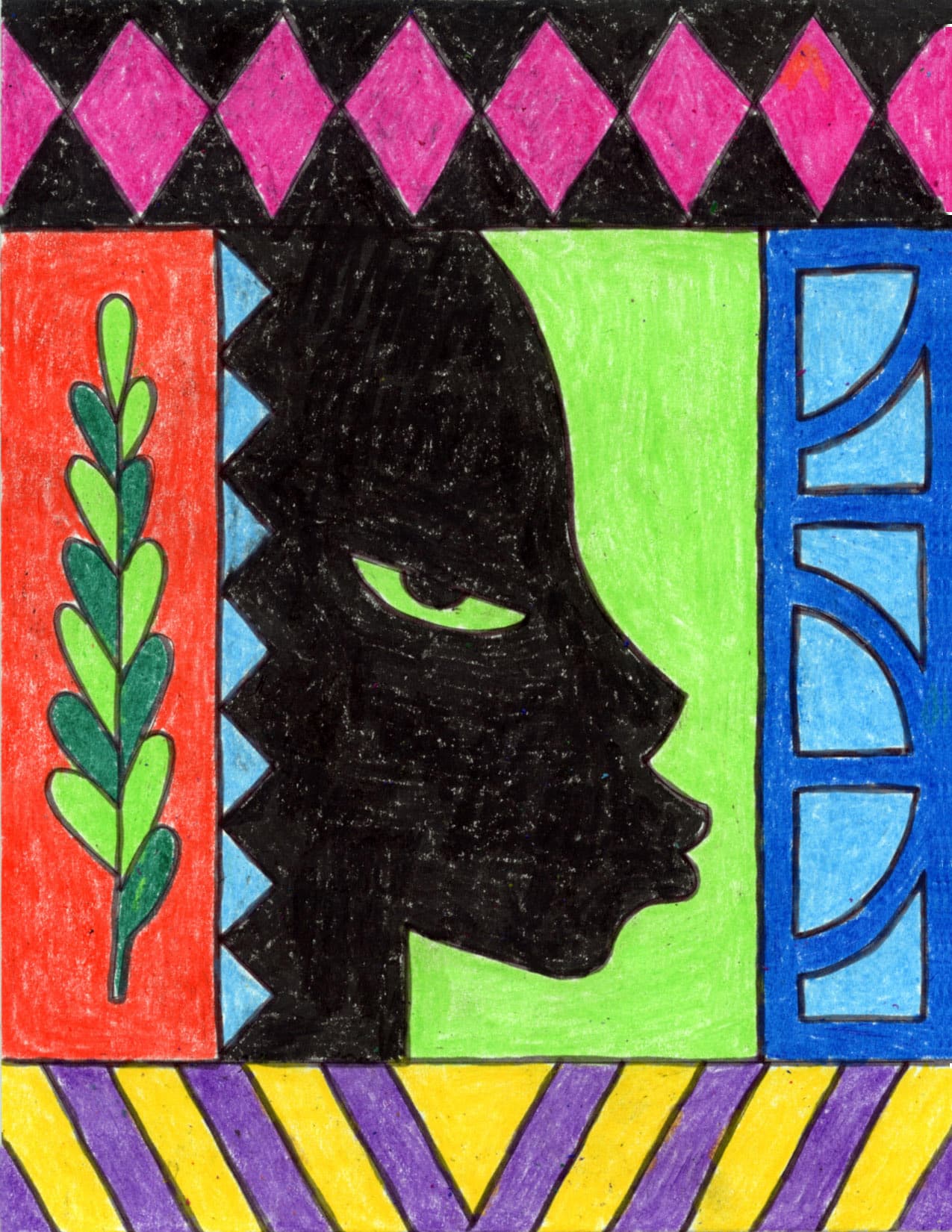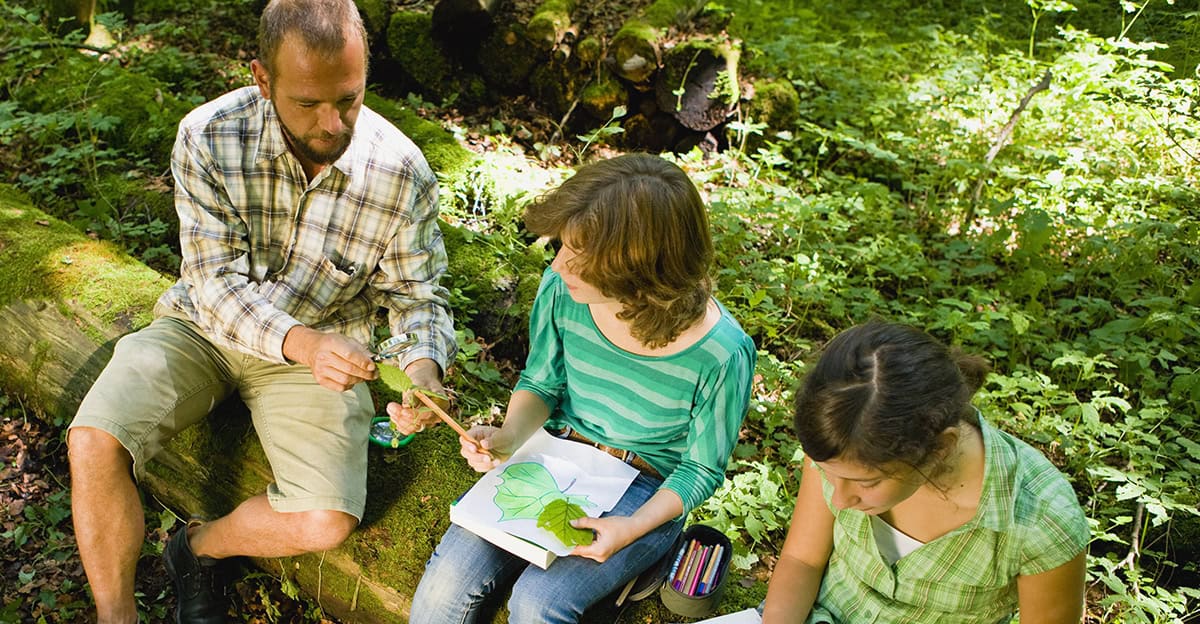
One warm morning, as I sat on my front porch, I heard an odd, loud, piercing cry. Soon, a medium-sized hawk flew to the top of the house across the street. It was hard to look away, but I decided I had to try to get my camera to capture the moment.
Of course, as soon as I went inside, the hawk flew away. Despite having watched for a good minute or two, I don’t think I could confidently picture or identify the hawk. What could I have done differently to better remember the details of the moment? What tools would have been great to have at my fingertips?
John Muir Laws
John Muir Laws—an award-winning author, artist, naturalist, environmental educator, and principal innovator of the global nature journaling movement—would have been prepared for the hawk (though both Johns share a passion for nature, Laws is not named after or related to John Muir, environmental advocate and founder of the Sierra Club).
John, who goes by the name “Jack,” would have had his nature satchel nearby filled with his nature journal and the necessary tools to remember this experience. Instead of going inside for his camera, he would have known what to do to “capture” the moment forever.
Jack has spent his career looking for the best tools to connect people to nature and help them fall in love with the world around them. He has dedicated his life to the art of nature journaling and to offering step-by-step guidance to help students and adults feel confident getting started.
In 2022, Jack co-founded the Wild Wonder Foundation, where you’ll find numerous free resources to help you and your students start nature journaling today! Check out the free Quick Start Guide to Nature Journaling, available for download in eight languages.
Not Just for Nature-Loving Teachers!
In the following article, you will learn some of his basics of nature journaling, some techniques and tools to help you get started (or improve your experience) with students, and more about what has inspired Jack to do this work.
We will also explore why this is important to do with students, even if a nature expedition isn’t normally your thing. But don’t be surprised if, after the lesson, you find yourself inspired to do more nature journaling on your own!
Journaling is the single most powerful tool to supercharge your observation, memory, and connection with nature. It is the critical foundational habit of being a naturalist and scientist.
John Muir Laws
Laws argues that the observation notebook is a “fundamental thinking tool” that helps students observe more carefully and remember more effectively. He says, “Keeping a journal of your [nature] observations, questions, and reflections will enrich your experiences and develop gratitude, reverence, and the skills of a naturalist. The goal of nature journaling is not to create a portfolio of pretty pictures but to develop a tool to help you see, wonder, and remember your experiences.”
He believes everyone can develop these observation skills and that you do not have to be an artist or a naturalist to do this. He continues:
I believe that the process of attention is what makes you fall in love with the world. It is through attention that we create memories, but those memories will change over time so keeping a notebook and documenting what you’re seeing is a very powerful way to help you preserve the integrity of those memories as a scientist… the notes are data, a record of what I see.
John Muir Laws
During my interview with Jack, it became clear that his passion would benefit FOSS users by helping teachers better support students with their science notebooks and enriching many of the outdoor experiences built into our program. As you read on, consider how these observation skills could be used outdoors to help you dig deeper into the schoolyard activities from your Investigation Guides.
What is Nature Journaling?
Observation notebooks, nature journals, science notebooks—Jack calls them nature journals, but all terms are relevant—are all about getting students outside to record what they see. Students are encouraged to look very carefully at unique and mundane things they find and to slow down and connect with the natural world. Observations lead to deeper understanding and more lasting connections.
The goal of nature journaling is not to create a portfolio of pretty pictures but to develop a tool to help you see, wonder, and remember your experiences.
John Muir Laws
Jack believes the step-by-step strategies used to enhance observations are tools that provide a road map to making stronger, longer-lasting memories. They help people connect more deeply with nature. He says, “Looking hard isn’t enough. Observation isn’t something in the eyes; it engages your brain in a dynamic way to remember what you observe—intentionally engage your curiosity. Curiosity is a skill you can enhance and develop if you’re deliberate about it.”
How to Get Started with Nature Journaling
It’s probably best to start observing things that will not fly, hop, or run away. Start with acorns, seeds, leaves, or flowers. When you want to capture an animal, they tend not to stay still for you or your students, so Jack recommends speaking out loud about what you see.
As an example, the following is what I could have said about my hawk (I will write an X where I cannot remember specific details):
The hawk is about 28 cm high, brown with only a few white feathers on the back, the white feathers look like stripes, its beak is X color, with a sharp point, the beak is about the size of X, the eyes are X color and located on the X of its head. Its tail feathers are X long. Its head swivels to the left and right about 180 degrees. It is resting on the peak of Sean and Carol’s house with a small bird in its talons. What is it using to balance itself if the bird is in its talons? I wonder how long it will take to eat the bird? What parts of the bird will it eat? Will it use the feathers for something else?
Saying these things out loud is a “powerful brain trick” and would have helped me form a picture in my head and, in turn, remember the details longer. Jack recommends thinking about patterns, shapes, sizes, and other basic details. When the bird flew away, I would better remember these things as I pulled out my notebook from my satchel to start my nature journal.
With a class of students, everyone would simultaneously whisper their observations to themselves. This can be practiced indoors and may seem silly initially, but it works.
The nature journal entry will be a conversation between a natural phenomenon and your brain. This process creates a time to slow down and process things. Jack recommends that teachers emphasize three languages in nature journaling: words, pictures, and numbers. Of course, these would look very different with younger kids than older students, but you will judge what your students can handle.
- Words: Record short thoughts and ideas (no need for full sentences or correct spelling). Write what you see, hear, feel, and wonder about, as well as any questions you may have. Include the location, weather, and time of day.
- Pictures: Include drawings, diagrams, maps, and sketches (color is not necessary, but useful). For drawings, start with the general shape and proportions of what you see and add details from there.
- Numbers: Use the language of numbers. Count, estimate (especially when the numbers are too great to count), measure, and note the temperature. Record the time and date.
Jack believes that the tools you include will influence how students observe and will affect the things students see. Students need easy access to simple tools when on a nature walk, in the schoolyard, or on a field trip to a natural place.
First, you don’t want to have to go inside to get something you forget (because the hawk will fly away!). You also don’t want everything in a backpack or your teacher’s bag because it takes too long to take it off or dig it out. Students need immediate access to their tools.
Cloth shoulder satchels are ideal (Jack and his team designed and tested this Custom Nature Journaling Bag). But if you’re like most teachers and don’t have a budget for something like this, consider making satchels for students using zip bags, as FOSS describes in the Taking FOSS Outdoors chapter. Students should try to include a small ruler, a magnifying lens, pencils, and a notebook. The tools you have will change the way you observe as they affect the things you see.
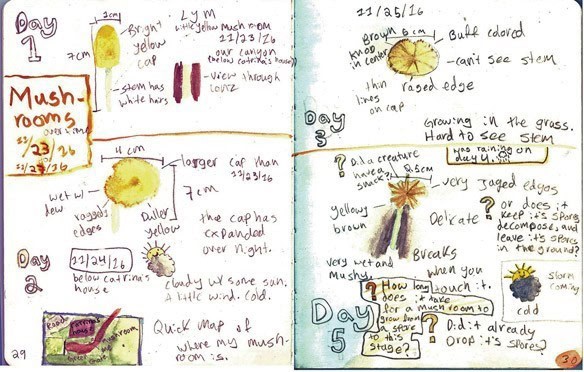
Jack cautions that the first time you introduce a new tool or procedure, it will be a novelty for students and may be a distraction. Students will want to investigate that new tool and overuse it. It may take time until students begin using the tool without being distracted, but the only way to overcome that is to use or do it regularly. Anticipating that this will be an issue for students will best prepare the teacher to expect certain behaviors.
The first time you do some nature journaling with students, the experience itself will be a novelty and a distraction. Likewise, taking students outside for an outdoor activity for the first time will be a novel experience. The Taking FOSS Outdoors chapter highlights many teaching strategies to improve the outdoor experience.
Learn More: Science Instruction Outside of the Classroom
Why Should People Nature Journal?
People should do this because the world is infinitely fascinating and beautiful. You see so much more when observing through the journal. The ability to hold things in our head is really limited. Journaling gets us past the limits of our brain’s capacity of how much information it can store and hold and manipulate at one time. The journal frees up our brain, once you’ve got all of this down on paper, your brain is freed up to operate at more sophisticated levels.
John Muir Laws
Nature journaling is a great way to reach out to children. Jack explains, “I was shut down academically and had come to believe, because I’m dyslexic and had trouble spelling and writing sequences of numbers, that I was ‘stupid.’” But a high school biology teacher saw past this by engaging Jack, believing in him, and introducing him “to the joy and fun of scientific exploration.”
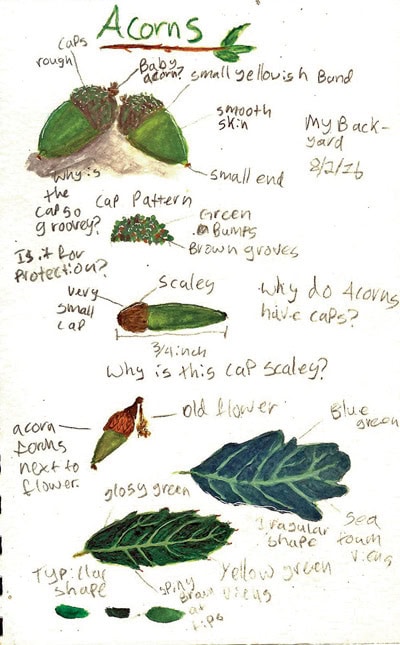
The FOSS staff works with science educators from across the country, and we know that many of you are meeting the young “Jacks” of the world and believing in them. You help them see the wonders of classroom science, the schoolyard, and the greater world around them.
We believe that finding time to use nature journals with your students will make them more productive thinkers, better observers, and more peaceful, nature-loving young people.
Young Nature Journaler Over the Years
The nature journal pages you’ve seen in this article were from a journal by Fiona Gillogly. At that time, she was a 13-year-old seventh-grader in Applegate, California. She had been doing this for only five months when she shared with us this magical experience she had in nature with her journal:
In August, I was back in Sierra Valley with my new best friend and nature journaling buddy, John Muir Laws, also known as Jack. We worked in our journals and sketched the birds we saw, including American bittern, sandhill crane, and great egret.
As we walked up to the steel bridge, it was dusk, and my mom called out “Barn owl! Barn owl!” and Jack and I saw it flying along the edge of the bridge. We were mesmerized. Then Jack said, “I just saw that barn owl fly under the end of the steel bridge.” We gave each other one look, and since we are crazy nature people, we went running to the end of the bridge where he saw it go.
Jack climbed down over the edge of the bridge and peered in under the large rock piles around the base of the bridge. It was almost dark by then, so Jack pointed a flashlight into a crevice in the rock pile. He looked up at me, and whispered excitedly “FIONA! You NEED to come down here RIGHT NOW!” So my mom and I climbed down and peeked in, and there, not two feet back in the hole, looking right at us, sat the spectacular barn owl. Of course, we both went straight to our journals to draw and write about it. This evening was a truly miraculous occurrence that I will never forget.
Fiona Clare Gillogly, Birder, Artist, Nature Journaler, and Advocate for Nature
Fiona met Jack on her 13th birthday, and Jack immediately saw the fire and curiosity Fiona had for nature. Fiona is now 21 and has continued her passion for nature journaling. You can see some of her recent pages, read her essays, and see her talks on nature journaling at fionasongbird.com.
To learn more about taking science instruction outside and helping your students engage with nature, check out the FOSS Next Generation modules for grades K-8!
This month on the It’s Time for Science podcast, we had both John Muir Laws and Erica Beck Spencer come in and tell us more about nature journaling and outdoor science. Listen below!
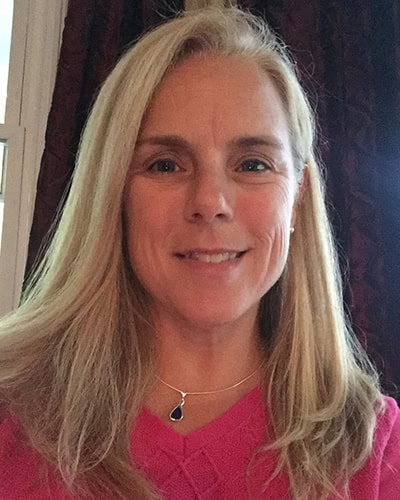
Erica Beck Spencer
Erica is a curriculum specialist with the Full Option Science System Project (FOSS K-8) and spearheaded the major Taking FOSS Outdoors initiative. In addition to developing the program, over the course of her career with FOSS, she has worked with over 50 districts and tens of thousands of educators on implementing the FOSS program. She has taught a wide variety of educators, ranging from kindergarten paraprofessionals to train-the-trainer sessions in diverse settings, including major urban adoptions, rural schools, and even international trainings in Egypt and Italy. She has served on the board of directors for the Maine Environmental Education Association, Rippleffect, and will be the board president for the Maine Math and Science Alliance. She holds a Master of Education degree from Lesley University. Prior to working for FOSS, she taught in urban schools in Cambridge, Boston, and Portland, Maine.

John Muir Laws
A principal innovator in the global nature journaling movement, John Muir Laws is an award-winning naturalist, artist, scientist, educator, and the author and illustrator of several books, including The Laws Guide to Nature Drawing and Journaling, The Laws Guide to Drawing Birds, and The Laws Guide to the Sierra Nevada. He is also the co-author of How to Teach Nature Journaling. He is co-founder and president of the Wild Wonder Foundation, a nonprofit dedicated to encouraging nature connection and conservation through attention, curiosity, art, science, and community.





